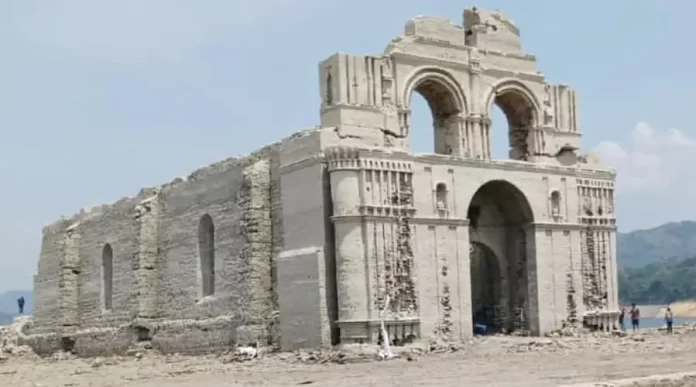As a result of heat waves, due to intense draught that have caused serious suffering in Mexico, a Catholic temple of more than 400 years old has completely emerged from the waters in the state of Chiapas.
The church of the disappeared town of San Juan Quechula during a flood in 1966 due to the construction of the Nezahualcoyotl hydroelectric dam. It is dedicated to Santiago Apóstol and erected by Dominican friars who evangelized the region headed by Fray Bartolomé de las Casas in the 16th century.
Tourists could approach it using boats as the top of the church had remained visible in recent years.
However, this year’s drought allows the century-old Catholic church to be visible in its entirety. There are seven churches that are buried underwater or in stone in different regions of Mexico.
According to the Tecpatán City Council website, it is estimated that the temple was built “between 1564 and 1606”, although “it was abandoned in 1776 due to a series of plagues that affected the surrounding communities.”
According to the Mexico Drought Monitor, “in the first half of June 2023, rainfall deficits were observed in a large part of the national territory.” In the regions of Chiapas, the category of drought was raised from moderate to severe.
In the current hot season, which according to the Mexican authorities runs from March 19 to October of this year, nearly 500 people have been affected, with discomfort ranging from a sudden increase in body temperature to loss of knowledge.
In addition, eight people have died in the states of Veracruz, Quintana Roo, Sonora, and Oaxaca in cases related to excessive heat.



